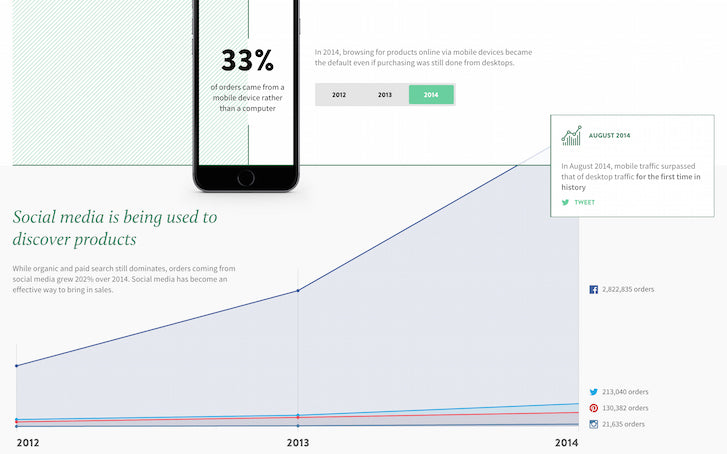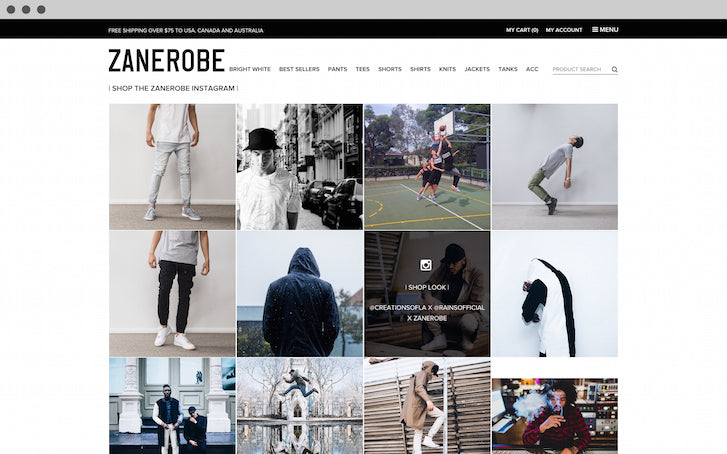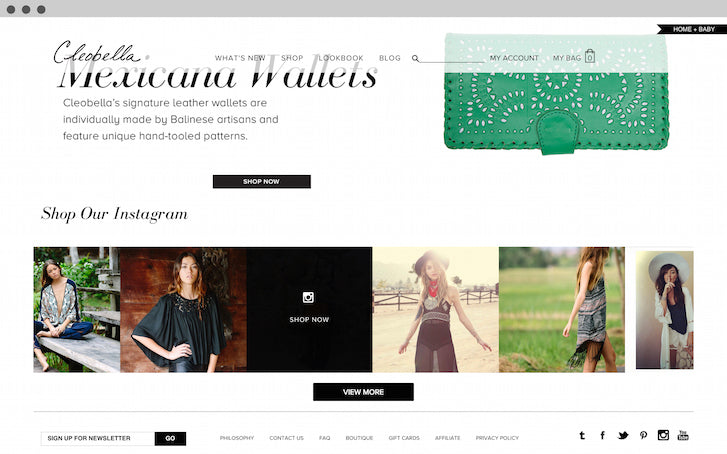We live in an amazing time where social content has the ability to transform a brand’s identity and take it to new heights.
It’s no secret that creative social strategies are key to driving engagement, visibility, and brand growth. But for many brands who spend considerable time and resources cultivating large social communities, turning their social engagement into measurable sales remains one of their most significant marketing challenges. With so much content and such remarkable engagement, the ability to make social content "shoppable" and understand the result of follower engagement has never been more necessary.
You might also like: How to Help Your Clients Get Results with Email Marketing
Why "shoppable" matters
With store-building tools like Shopify and marketing tools like Instagram, it has never been easier to start and promote an ecommerce store. According to Nielsen, 46% of shoppers consult social media before making a purchase decision. But while most visual networks like Instagram and Pinterest are easy to use and widely accessible, making that same content shoppable is not. With no link between the most popular social networks and the POS, retailers are missing out on a massive revenue stream.

Social media may have allowed brands and online retailers to reach millions of potential customers, but the question of how to convert followers into buyers still keeps marketers up at night. Oliver Walsh, head of marketing at Aritzia, stated that, “Instagram is quite limiting in the way it allows users to participate with content — users must stay within a single scrolling feed — there are no links out. And because users follow more and more brands and companies, our content gets buried more quickly.”
Because of social media realities like this, brands big and small need to implement creative methods to get their followers from Instagram to checkout.
Social as a sales tool
According to Shopify's “A Year In Commerce,” consumers are not only increasingly using social media to discover and purchase new products, but they’re also using social media on mobile devices rather than desktop computers. As the chart below illustrates, Facebook users are more likely to purchase products through social media than Instagram users. This is mainly because brands rely on social media tools like Shopify's Facebook Store app as an effective way to drive sales from social media.

Brands solely relying on Facebook apps are significantly limiting their potential for socially-driven sales. Since Instagram has upwards of fifty-eight times the engagement per user than Facebook, the potential lost revenue has become an increasingly frustrating reality for brands who derive most of their business from Instagram and other social networks.
Common problems
Here are some problems you might hear from your clients:
“My customers want to shop the products I post on Instagram — but can’t.”
I’m sure you’ve heard it, seen it, and maybe even had to deal with it. Followers want to buy from Instagram, but they can’t. Shopify user Bridgette Gale, founder of Australian Swimwear line Amore & Sorvete stated that, “I constantly have followers commenting on my Instagram photos saying things like ‘I can’t find this bikini in your site’ because I may have posted a product image that looked slightly different.”
When you have a significant and active following, answering these questions not only becomes a time-consuming task, but also results in lost revenue opportunities for brands.
“I get so many likes and comments but I have no idea whether they generated sales.”
While the majority of brands provide excellent product information in beautiful ways within their websites, the vast majority of them depend on their active social networks to engage in dialogue with their followers and customers.
For brands who have massive followings and a ton of engagement, however, there is no way of determining whether their likes or comments actually contribute to revenue. Since brands spend so much time and energy on growing their social following, understanding what happens after the screen has been double-tapped has never been more important — especially since competing content is just a swipe away.
You might also like: Your Client Wants Their Store to go Viral? Here's How to Do It.
Solving painpoints
To help your clients combat these social media problems and monetize Instagram, there are a few things you can do to provide clients with a full-circle social shopping solution.
Shoppable vs. non-shoppable Instagram galleries
When integrating social widgets for your clients, consider swapping out traditional social widgets for shoppable ones. The fact that your clients’ followers and customers can shop directly from embedded posts will allow customers to purchase out of the desire created by social content.

Developer tools
When searching for shoppable social tools, opt for services that give you either API access or the ability to customize CSS. Not only will these developer tools provide you with the ability to take the look, feel, and overall functionality of social widgets to the next level, your clients’ social widgets are going to do a lot more than just look pretty. Isn't that what every socially-powered Shopify merchant wants?

The consulting arm
Another great thing about shoppable social galleries is that they’ll allow you to include a specific facet of social media consulting into your offering. Not only will developer-friendly tools give you the ability to customize social widget galleries, but they’ll also provide you with the ability to offer valuable insights in terms of where these galleries should exist in shops and how to communicate their function. In some cases, brands may want to integrate shoppable social content into multiple locations using multiple embed styles. Placements have ranged from the homepage, stand alone pages, blogs, and even product pages. Embed styles range from full-page integrations, horizontal slider feeds, and even the classic 2 x 6 gallery.

Once you start developing with shoppable galleries, the widgets you used in the past will turn out to be just that — the things you used in the past. Introducing your clients to these creative and powerful social solutions will not only extend your social media development offering, but they will also set you apart in terms of the depth of your social media expertise and capability.
Social network integration
In addition to customization and placement, consulting recommendations can even include suggestions relating to how your clients leverage their shoppable galleries within their most prominent and valuable social channels. For instance, suggesting that clients link to their in-website social gallery from Instagram through the “link in profile” approach has been quite successful for brands that provide succinct calls to action within their photo captions. (For example: "Shop the look via link in profile").

Having worked with countless ecommerce brands, we know that integrating social widgets are among the most commonly requested services. By introducing your clients to this type of offering, your clients' customers will never have to stumble around online stores, desperately trying to locate what they saw on Instagram.

Analytics & insights
In addition to integrations and customization, shoppable galleries will also allow you to provide your clients with valuable insight into which content drives the highest click-through rates and conversions. Helping your clients understand what content converts relative to what drives engagement will be invaluable to their social media planning and decision making down the road. A true win-win.

Conclusion
From global ecommerce powerhouses to Shopify startups, brands from across the globe have been tapping into the world of shoppable social content with great success, and it doesn’t seem to be slowing down anytime soon. Help your clients unlock the potential of their social content today.
Read more
- Client Collaboration: 8 Tips to Deliver Successful Projects
- How to Write Excellent Commerce Content for Your Clients
- 10 Tips to Take a Vacation as a Business Owner
- 3 Effective Ways to Help Your Clients Get Their Products Seen and Sold
- How to Drive Sales and Customer Engagement with Social Commerce
- How to Bring Disruptive Thinking to Your Agency’s Clients
- Client Onboarding: How a One-Man Agency Qualifies Leads and Turns Them Into Clients
- How to Save Your Clients Money with Shopify Shipping
- Driving Revenue for Your Clients Through Paid Social Funnels
You might also like: How To Find New Clients Using Social Media

